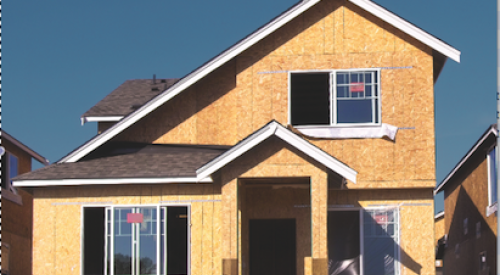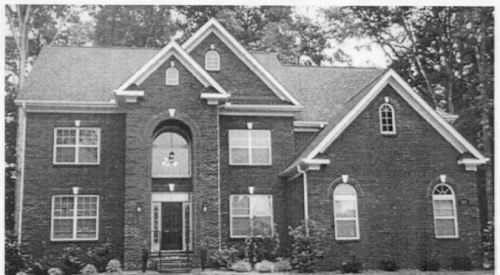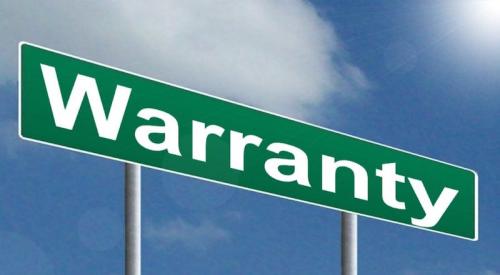As Bob Dylan once sang, “The times they are a-changin’.” Specifically, the building products industry is in the midst of a time of great opportunity. Manufacturers are developing more sustainable and energy-efficient building products. The green building movement, driven in part by the United States Green Building Council and its LEED rating system, as well as public desire for a more sustainable way of life, has made great strides in the past decade. In response to consumer demand, many building products manufacturers have developed or are developing new products that converge with the requirements of the various green-building rating systems. In particular, many new products encourage better energy or water efficiency, incorporate more local sources, and/or generate less waste.
Residential Products Online content is now on probuilder.com! Same great products coverage, now all in one place!
Builders should make every effort to understand these new products and what impact they can have on their latest project. Simply treating these products the same as traditional products may be asking for trouble. The following five recommendations will serve builders well in their efforts to limit potential liability from the use of a new product.
This first recommendation may seem simple, but it is the most important. Nearly every manufacturer produces installation instructions for its products, but frequently the installer ignores them. Construction defect litigation is rife with instances of an otherwise skilled builder failing to follow the manufacturer’s installation instructions. The installation instructions typically anticipate and address the potential problems that can arise from the product’s installation. Heed the installation instructions, especially when learning how to install a new product.
An added step a builder can take when installing a new product is to involve the product manufacturer in the installation process. Many times a manufacturer is exposed to liability simply from poor installation of its otherwise capable product. As such, a manufacturer has a vested interest in ensuring that its installers know how to properly install the products. Manufacturer involvement typically takes on one of two forms. Many manufacturers offer tutorials or mock-up sessions where builders can learn the proper installation techniques. Additionally, some manufacturers will send representatives to jobsites to observe product installation and ensure that it is properly done. When learning to install a new product, inquire if the manufacturer offers any tutorials. If a particular manufacturer does not have an education system in place, ask them to come to the jobsite and bring the education straight to the builder.
Many new products come with a product warranty that covers defects in the product for a period of time—typically one year. It is important for builders to understand the components of the warranty, as there are often requirements that must be met in order for the warranty to remain valid. For example, many warranties require that the product be installed strictly in accordance with the manufacturer’s installation instructions (see No. 1) or the warranty is voided. Therefore, if complications arise during the installation of a new product and the installer is considering a field modification, understand that doing so may void the warranty. Additionally, builders should provide copies of the warranty to the property owner upon completion and maintain a copy for themselves. In the event that a problem arises and the builder receives a distress call from the owner, it will be important to remember that the manufacturer may be able to solve the issue through the warranty procedures—and the builder will be glad that he took the necessary steps to maintain the validity of the warranty.
A builder’s risk or commercial general liability insurance policy can be an intimidating document. It is important to read and understand its contents, as it can be quite valuable or quite worthless in a time of trouble. Quite simply, a builder should ensure that the work he is performing—and pertinent to this article, the products he is installing—is not excluded from the coverage of his insurance policy. If a builder’s insurance policy excludes coverage for damages caused by a particular product, and a builder installs that product anyway, he could be left holding the bag if a problem arises. Most notably, many insurers began inserting EIFS (Exterior Insulation Finish Systems) exclusions in their commercial general liability policies following a run of litigation that such products experienced in the recent past. While this should not be an issue with most products, it is important to make sure that coverage is not placed at risk by the new product on the block.
Finally, a builder should always stay up to date on the latest industry trends regarding building products. Ours is a constantly evolving industry and new products and solutions are being developed all the time. Follow the commentary and criticisms of new products, and the efforts of manufacturers to address any bugs in a new product. It is tempting to simply stay with what you know, but the most successful builders will be able to adapt with the times and with public demand. The builder who is nimble enough to adeptly handle the newest sustainable and energy-efficient products as they roll off the factory floor will become the new industry leader as green buildings become the norm. Do not be afraid of the change, but take the necessary precautions to protect your business and your clients as the sustainability movement takes hold.
Attorneys F. Cordes Ford and Harrison Trammell are members of Womble Carlyle Sandridge & Rice’s construction industry group based in the firm’s Charleston, S.C. office. Ford’s practice focuses on business and construction litigation, with clients including product manufacturers, developers, contractors, and sureties. Trammell is a LEED-accredited professional and his practice includes representing contractors, developers, and product manufacturers. They can be reached by email at cford@wcsr.com and htrammell@wcsr.com.
PB Topical Ref












